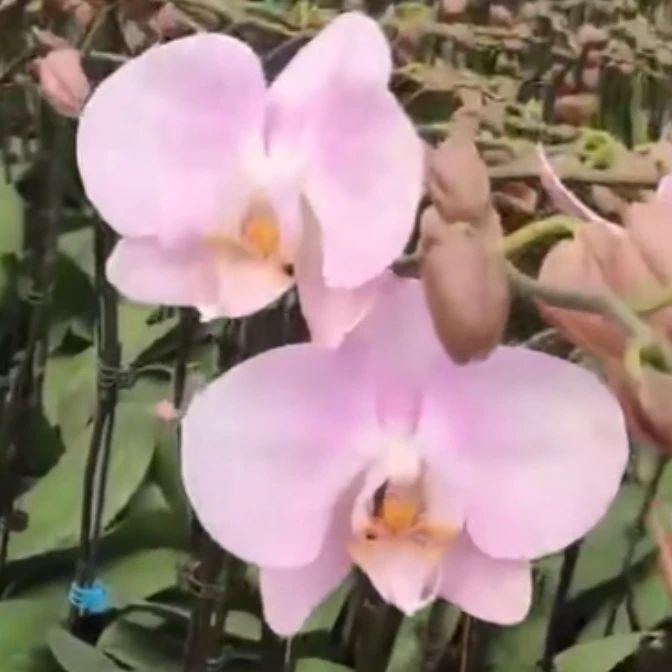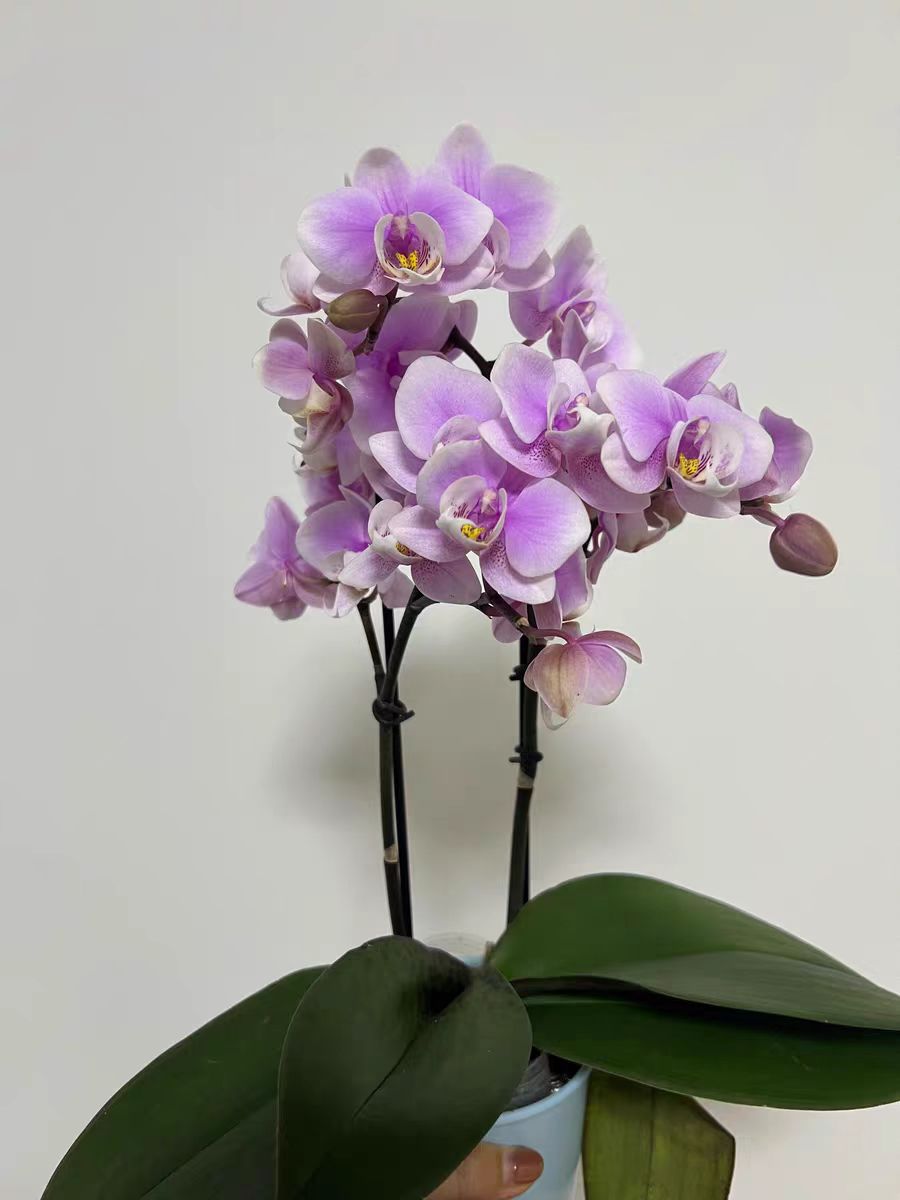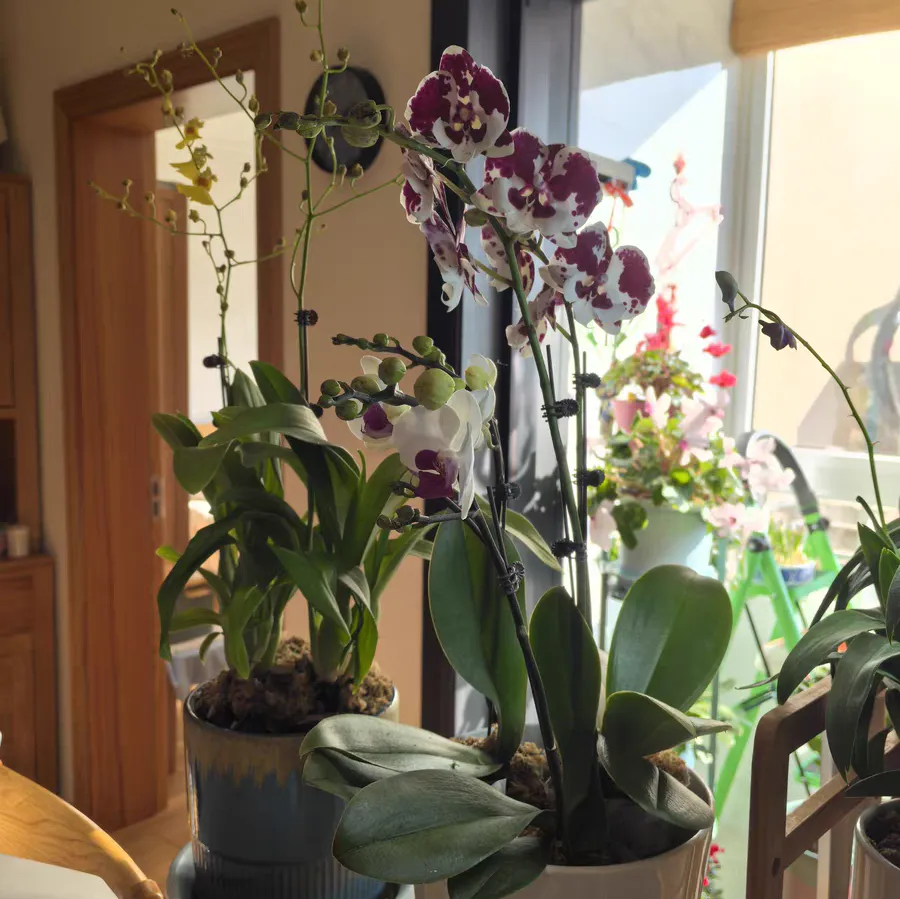Today, I'd like to introduce to you a super beautiful variety of Phalaenopsis - Alice.
Phalaenopsis Alice belongs to the large-flowered varieties. When it's in full bloom, the diameter of its flowers can reach more than ten centimeters. The petals are broad and stretch out gracefully, dancing on the branches like fairies. Whether it's placed in the living room or the study, it can add a touch of elegance and grandeur to the space.
Generally speaking, Phalaenopsis Alice is relatively easy to cultivate. As long as you master the key points of cultivation, even beginners in flower cultivation can make it grow vigorously.
Daily Care:
Light: It prefers bright, scattered light and should not be exposed to direct sunlight. It's okay to place it by the window indoors with a gauze curtain for shading or in a bright place with soft light. Strong light will burn its flowers and leaves and affect its beauty.
Temperature: The appropriate temperature is very important for Phalaenopsis Alice. It likes a warm environment, and generally, the temperature range of 15 - 28 °C is the most suitable. In winter, pay attention to keeping it warm. The temperature should not be lower than 10 °C, otherwise, it may get frostbitten. When the temperature is too high in summer, it's necessary to cool it down and ensure good ventilation appropriately.
Watering: Watering is a crucial step. The roots of Phalaenopsis Alice are fleshy roots and are prone to rotting due to waterlogging. We can insert our fingers into the substrate. When the part 2 - 3 centimeters below the surface of the substrate is dry, water thoroughly until the water flows out from the bottom of the pot. The watering frequency depends on the substrate. If it's a sphagnum moss substrate, watering can be less frequent. If it's a bark substrate with good drainage, you can water a bit more appropriately, but waterlogging should also be avoided. Especially in winter when it grows slowly, watering should be controlled more carefully.
Fertilization: During the growing season (spring and autumn), you can apply a thin liquid fertilizer once every 2 - 3 weeks. For example, the specialized Phalaenopsis nutrient solution is good. Dilute it according to the lowest concentration indicated in the instructions. Before the flowering period, the proportion of phosphorus and potassium fertilizers can be increased appropriately, which can promote flower bud differentiation and flowering. Be careful when fertilizing and don't splash the fertilizer onto the leaves and flowers, otherwise, they will be burned.
Precautions:
Ventilation: A good ventilation environment is essential, which can reduce the occurrence of pests and diseases. Phalaenopsis Alice can be placed in the corner of the living room or balcony where the air circulates well, but don't place it in a place where it's directly blown by the wind.
Avoid Frequent Moving: It's relatively sensitive to environmental changes. Once it has adapted to the conditions such as light, temperature and humidity in a certain position, frequent moving may affect its growth and flowering. So, try not to move it around randomly after choosing a suitable position.
Pest and Disease Control: Regularly check whether there are pests and diseases on it. Common diseases like anthrax and soft rot can be prevented and treated with fungicides such as carbendazim. If scale insects are found, you can use a soft cloth dipped in alcohol to gently wipe the pests off the leaves or use specialized insecticides. Pay attention to the concentration and safety when using them.
Is Phalaenopsis Alice a large-flowered variety?

Share with
Tagged in :




Leave a Reply